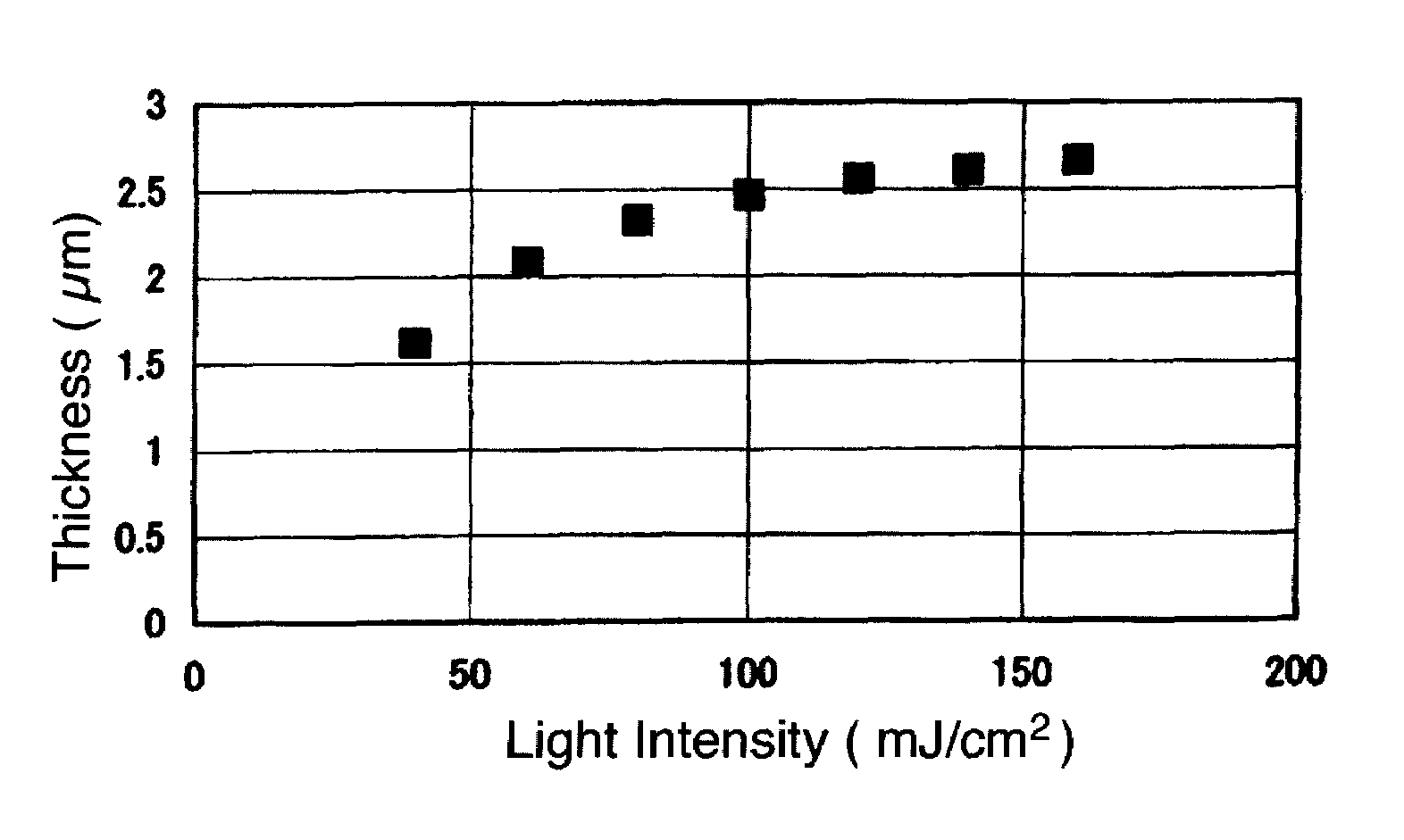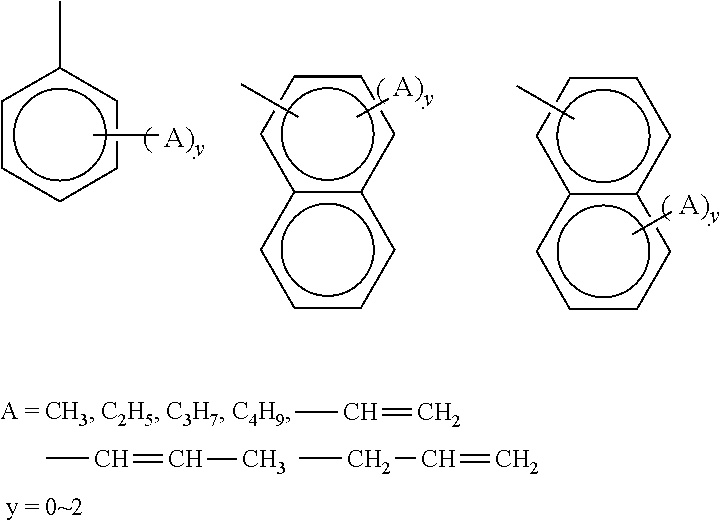Polyorganosiloxane composition
a polyorganosiloxane and composition technology, applied in the field of resin composition, can solve the problems of thermal imidation, inability to achieve performance alone, and reduced physical properties of the cured film, so as to achieve excellent photosensitive characteristics, excellent transparency, and reduce remarkably the effect of volume shrinkag
- Summary
- Abstract
- Description
- Claims
- Application Information
AI Technical Summary
Benefits of technology
Problems solved by technology
Method used
Image
Examples
synthesis example 1
(Synthesis of a Polyorganosiloxane P-1)
[0123]In a round-bottom flask of 2 L in volume installed with a water-cooled condenser and stirring blades with a vacuum seal, 540.78 g (2.5 mol) of diphenylsilanediol (hereinafter, DPD), 577.41 g (2.325 mol) of 3-methacryloyloxypropyltrimethoxysilane (hereinafter, MEMO) and 24.87 g (0.0875 mol) of tetra-isopropoxytitanium (hereinafter, TIP) were charged; and stirring was started. The charged flask was immersed in an oil bath; the heating temperature was set at 120° C.; and heating was started from room temperature. The solution was reacted till the reaction solution temperature became constant while methanol generated in the progress of the polymerization reaction was refluxed by a water-cooled condenser; and thereafter, stirring under heating was continued further for 30 min.
[0124]Thereafter, the flask was installed with a hose connected to a cold trap and a vacuum pump; and by strongly stirring the solution while heating at 80° C. using an o...
synthesis example 2
(Synthesis of a Polyorganosiloxane P-2)
[0125]In a round-bottom flask of 2 L in volume installed with a water-cooled condenser and stirring blades with a vacuum-seal, 432.62 g (2.0 mol) of DPD, 495.71 g (1.996 mol) of MEMO, 0.568 g (0.002 mol) of TIP and 0.16 g (0.004 mol) of sodium hydroxide were charged; and stirring was started. The charged flask was immersed in an oil bath; the heating temperature was set at 80° C.; and heating was started from room temperature. The solution was reacted till the reaction solution temperature became constant while methanol generated in the progress of the polymerization reaction was refluxed by a water-cooled condenser; and thereafter, stirring under heating was continued further for 30 min.
[0126]Thereafter, the reaction solution was cooled to room temperature, and passed through a glass column filled with an ion exchange resin (made by Organo Corp., Amberlist 15, the resin of 40 g in dry weight swollen and washed with methanol) to remove sodium i...
synthesis example 3
(Synthesis of a Polyorganosiloxane P-3)
[0128]A polyorganosiloxane P-3 (the viscosity at 23° C. was 78 poises) was obtained as in Synthesis Example 1, except for using tetra-isopropoxyzirconium in place of TIP in Synthesis Example 1.
PUM
| Property | Measurement | Unit |
|---|---|---|
| temperature | aaaaa | aaaaa |
| temperature | aaaaa | aaaaa |
| temperature | aaaaa | aaaaa |
Abstract
Description
Claims
Application Information
 Login to View More
Login to View More - R&D
- Intellectual Property
- Life Sciences
- Materials
- Tech Scout
- Unparalleled Data Quality
- Higher Quality Content
- 60% Fewer Hallucinations
Browse by: Latest US Patents, China's latest patents, Technical Efficacy Thesaurus, Application Domain, Technology Topic, Popular Technical Reports.
© 2025 PatSnap. All rights reserved.Legal|Privacy policy|Modern Slavery Act Transparency Statement|Sitemap|About US| Contact US: help@patsnap.com



